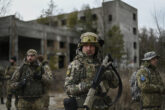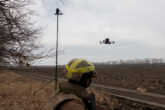
February 18, 2021
Trends, Timelines, and Uncertainty: An Assessment of the State of Cross-Strait Deterrence
Testimony Before the U.S.-China Economic and Security Review Commission
Submitted Written Testimony
I. Introduction
Chairman Talent, Chairman Goodwin, distinguished members of the Committee, thank you for the opportunity to participate in today’s hearing. It is a privilege to testify here on matters that are important to the vital national security interests of the United States and Taiwan, as well as those of our other allies and partners.
I will specifically address the ability of the United States and Taiwan to deter military aggression by the People’s Republic of China (PRC) across the Taiwan Strait, both now and in the future. I will then examine PRC and U.S. capabilities, points of vulnerability for China (this term hereafter referring specifically to the PRC), and important points of uncertainty. Finally, I will offer policy recommendations about some of the steps that might be considered to improve cross-Strait deterrence, in the hopes of avoiding what would be, were it to occur, a catastrophic conflict for all concerned.
II. Status, Trends and Timelines in the Cross-Strait Deterrence
When I consider the state of cross-Strait deterrence, underlaid in large part by the associated military balance, my assessment is that we are entering a period of deep uncertainty. This is in stark contrast to the situation of perhaps twenty years ago, when I would have unhesitatingly predicted failure for the PRC in any attempt to invade, blockade, or bombard Taiwan. It is also in contrast to the situation that, absent significant changes in current trends, we seem headed towards in ten to twenty more years’ time: PRC military domination of Taiwan. That we could be headed toward that situation should be unsurprising given the larger strategic environment. With rough economic parity between the United States and China, over a longer timeline U.S. efforts to prevent military coercion or invasion of Taiwan will run up against a clear asymmetry of both geography and national will, given what the stakes mean to China. As such, efforts to deter China must be extraordinarily focused on the parts of both the United States and Taiwan to remain successful. To date, they have not been. Instead, some of the United States’ focus has been lost to distractions from Russia and the Middle East, while Taiwan’s focus has at times wandered to investments in conventional “status” weapon systems such as fighter aircraft and armored vehicles, instead of the capabilities genuinely needed to deter a Chinese invasion. While the United States and Taiwan have begun to recognize and take action to address the growing scale of the threat from China, doing so specifically in the 2018 U.S. National Defense Strategy and in Taiwan’s Overall Defense Concept, these efforts continue to face institutional inertia as well as impediments from those who would be negatively affected by their implementation. As such, they have thus far been of somewhat limited impact in terms of their implementation.
The ongoing trends related to the cross-Strait military balance that concern me the most are not those directly tied to comparisons between Taiwan and Taiwan-adjacent forces of the People’s Liberation Army (PLA). Rather, I am most concerned about China’s development of broader regional capabilities which are clearly intended to counter or deter a U.S. intervention to defend Taiwan (or other U.S. allies) against Chinese aggression through the imposition of prohibitive costs, or the threat thereof. These are most visible in the form of China’s deployment of large numbers of capable precision-strike Intermediate Range Ballistic Missiles (IRBMs), its growing long-range bomber force, and its rapidly growing blue-water navy.
In my estimation the mid-to-late 2020s may be the period of greatest peril for a failure of cross-Strait deterrence. This timeframe will see the trailing edge of a period of mass retirement of late-Cold War-era U.S. platforms, combined with the continued growth and modernization of China’s counter-intervention forces. In particular, the retirement of the Navy’s oldest cruisers, at nearly the same time as that of its four guided-missile submarines (SSGNs), will result in a significant drop in the available number of vertical-launch missile tubes that could be deployed in support of a Taiwan intervention. This will occur before many of the most important China-focused changes implemented by the United States and its allies begin to bear fruit, but after sufficient time has elapsed for China to rectify perhaps the biggest capability gap that it faces in terms of its ability to invade Taiwan—its capacity for sealift across the Taiwan Strait.
Read the full testimony.
More from CNAS
-
Defense / Transatlantic Security
When Defense Becomes Destruction: Austria-Hungary’s Mistake and Ukraine’s RiskThis article was originally posted on War on the Rocks. The southeastern Polish city of Przemyśl, with its elegant 19th century Habsburg-era train station, remains one of the ...
By Franz-Stefan Gady
-
Defense / Transatlantic Security
Ukraine’s Catch-22 MomentThis article was originally published in the Financial Times. In Joseph Heller’s wartime classic, Catch-22, the protagonist Yossarian seeks out the US army surgeon Doc Daneeka...
By Franz-Stefan Gady
-
CNAS Insights | Budgetary Own Goals Undermine “Speed and Volume”
On November 7, Secretary of Defense Pete Hegseth laid out a plan to overhaul the Department of Defense’s (DOD’s) acquisition system. Placing an emphasis on delivering new capa...
By Philip Sheers, Carlton Haelig & Stacie Pettyjohn
-
Drones: Who Is Making the New Weapons of War?
From Ukraine and Russia to Gaza and Sudan, drones have become a key weapon of war. Which companies are making them, and profiting from this rapidly expanding but controversial...
By Stacie Pettyjohn




